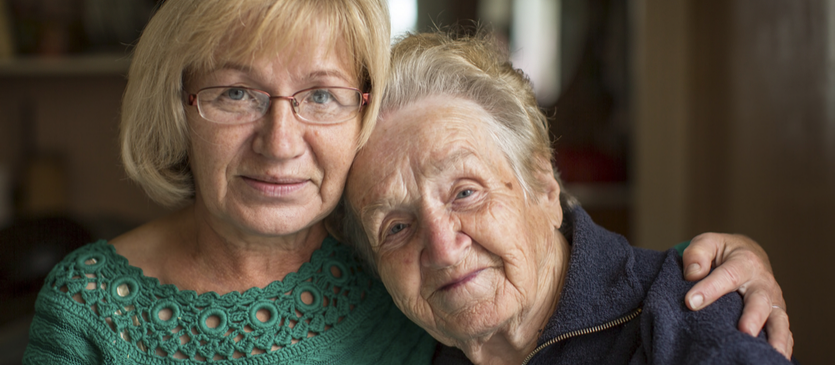Are your family members experiencing caregiver burn-out? It’s very common but not often talked about, particularly amongst those who regularly look after loved ones.
If you are getting on in years and still living at home, one option is to rely on a family member to help you with chores like cleaning, shopping and getting to and from appointments.
Many Australians look after older family members. However, this is resulting in what’s known as the ‘sandwich generation’; people of retirement age who are finding themselves trapped between caring for grandchildren as well as their elderly parents.
The challenge for this generation is wanting to help mum or dad but also finding life overwhelming. Instead of saying no, they take on more responsibility, which can lead to caregiver burnout.
If your family member is your caregiver, he or she may struggle to step away from their role because they feel guilty. However, as the saying goes, ‘You can’t drink from an empty cup’. By taking the time to rest and refuel, your family member has the chance to recover so they can be more effective and enjoyable to be around.
Fortunately, there are services to relieve caregiver burnout which mean you can spend more time simply enjoying being together.
Depending on your financial status, you should be able to access MyAgedCare funding, which can provide short-term care, live-in care and regular help around your home. If your family is busy and overwhelmed, these services will be ideal to give them a break.
MyAgedCare has a range of options to support elderly people who live at home, from getting help with the weekly shopping to administering medication to providing overnight respite care. The services you receive will depend on your needs. The amount you pay will depend on your financial circumstances but should still be affordable, even if you receive the old-age pension.
These services make caring for the elderly a community effort. It allows relatives to step away from constant, daily responsibilities and take some time out without the worry of you not being looked after.
With the help of MyAgedCare, you can continue to live independently. You will also be able to meet some new and friendly faces, giving you more to look forward to each week.
The first place to start if you are concerned about a family member feeling burnout due to their caregiver role is your GP. Make an appointment so you can discuss an ongoing care plan and find the right balance between living independently, relying on family and accessing government-funded assistance.
If you are getting on in years and still living at home, one option is to rely on a family member to help you with chores like cleaning, shopping and getting to and from appointments.
Many Australians look after older family members. However, this is resulting in what’s known as the ‘sandwich generation’; people of retirement age who are finding themselves trapped between caring for grandchildren as well as their elderly parents.
The challenge for this generation is wanting to help mum or dad but also finding life overwhelming. Instead of saying no, they take on more responsibility, which can lead to caregiver burnout.
What is caregiver burnout?
Caregivers get burned-out too, no matter how enthusiastic they are about their role. Some of the symptoms include:- Physical, mental and emotional exhaustion
- Shift in attitude
- Difficulty sleeping
- Loss of appetite
- Feelings of depression and anxiety
- Constantly feeling unwell
- Irritability
- Feelings of hopelessness
If your family member is your caregiver, he or she may struggle to step away from their role because they feel guilty. However, as the saying goes, ‘You can’t drink from an empty cup’. By taking the time to rest and refuel, your family member has the chance to recover so they can be more effective and enjoyable to be around.
Fortunately, there are services to relieve caregiver burnout which mean you can spend more time simply enjoying being together.
Caregiver respite?
Many Australians aren’t aware of the options for elderly people who still live at home.Depending on your financial status, you should be able to access MyAgedCare funding, which can provide short-term care, live-in care and regular help around your home. If your family is busy and overwhelmed, these services will be ideal to give them a break.
MyAgedCare has a range of options to support elderly people who live at home, from getting help with the weekly shopping to administering medication to providing overnight respite care. The services you receive will depend on your needs. The amount you pay will depend on your financial circumstances but should still be affordable, even if you receive the old-age pension.
These services make caring for the elderly a community effort. It allows relatives to step away from constant, daily responsibilities and take some time out without the worry of you not being looked after.
With the help of MyAgedCare, you can continue to live independently. You will also be able to meet some new and friendly faces, giving you more to look forward to each week.
The first place to start if you are concerned about a family member feeling burnout due to their caregiver role is your GP. Make an appointment so you can discuss an ongoing care plan and find the right balance between living independently, relying on family and accessing government-funded assistance.




